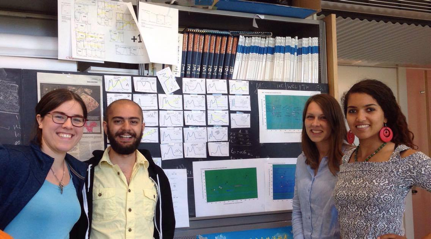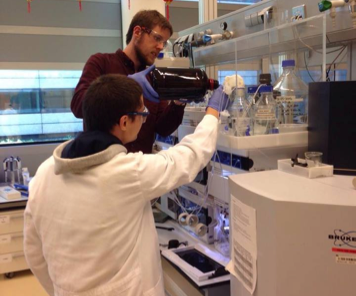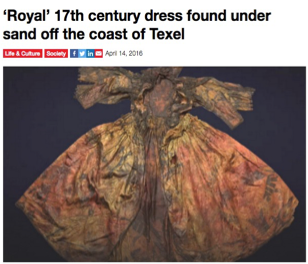
My name is Abed Haddad and I am currently in Amsterdam as part of the Cultural Heritage Research In the Netherlands an International Research Experience for Students (IRES) program sponsored by the National Science Foundation (NSF). In my undergraduate studies, I delved into both chemistry and art history with passion. Unbeknownst to me, there was a whole field that combines both! And now, I am a graduate student at the City University of New York under the mentorship of Dr. John Lombardi who is also a member of the Scientific Research Committee at the Metropolitan Museum of Art. My work in Surface Enhanced Raman Spectroscopy (SERS) lies at the intersection of nanotechnology, material chemistry, and forensic sciences, and has become of great interest to conservators because of its noninvasive nature. SERS uses the interaction between lasers and nanoparticles to identify colorant at very small concentrations due to physical and chemical enhancement mechanisms. As an ultra-sensitive analytical technique, it has been successfully implemented for cultural heritage research at the Metropolitan Museum; for example, the identification of dyes used in the Unicorn Tapestries at the Cloister, or early synthetic dyes used in late 19th century Japanese prints.

Still, it is often difficult to sum up the work of cultural heritage scientists; and that’s one of the exciting parts of the job. We wear many hats as we collaborate with art historians, conservators, restorers, and other scientists to uncover truths about our history, and I hope to do just that during my time in the Netherlands!
In partnership with the Rijksmuseum and the University of Amsterdam (UvA), my project exploits Ultra-High Performance Liquid Chromatography (UPLC) for the study of natural and synthetic textile dyes. UPLC utilizes size or overall charge characteristics to separate molecules as they are forced with high pressure through a separation column packed with surface-modified silica beads. Investigating comprehensive analysis parameters for rapid and effective separation of complex mixtures is of immense forensic value. Two different separation factors can be compounded for a 2-dimensional evaluation, increasing the identification capacity of an LC system, as dyers would sometimes use more than ten different colorants to achieve a particular shade. Furthermore, we hope to directly analyze the eluted compounds with mass spectrometry to establish degradation products and the mechanisms by which they occur. A well-resolved separation allows conservators to understand how colorants fade over time.

The cultural treasures of the Netherlands, combined with the sizeable cohort of conservation professionals at the Rijksmuseum, make for incredible study opportunities. Our research will be applied to an exemplary Dutch discovery from this year: a luxurious and rare 17th century dress found by divers off the coast of Texel amongst other small objects. The fabric is in dire shape, which requires diligent examination of small sample sizes. Alongside Professor Maarten Van Bommel and Ph.D. candidate Bob Pirok, we hope to undertake a substantial study of dyes used and uncover much about the provenance of the wardrobe.
I am relishing my time in beautiful Amsterdam by getting to know its streets and people; after all, not all of my time will be spent in the lab. I am looking forward to volunteering at Queeristan, an autonomous festival for radical queer politics, especially in the testing times following the Orlando shooting. Plus, the Netherlands has much to offer outside the capital. I am particularly excited to visit the Rietveld Schröder House in Utrecht, the only building truly designed after the abstract tenants of De Stijl.
Truly, I hope to inspire other scientists to make their own contribution to preserving the records of human creativity and ingenuity, and I cannot express how fortunate I feel to be part of this remarkable program.
Proost!